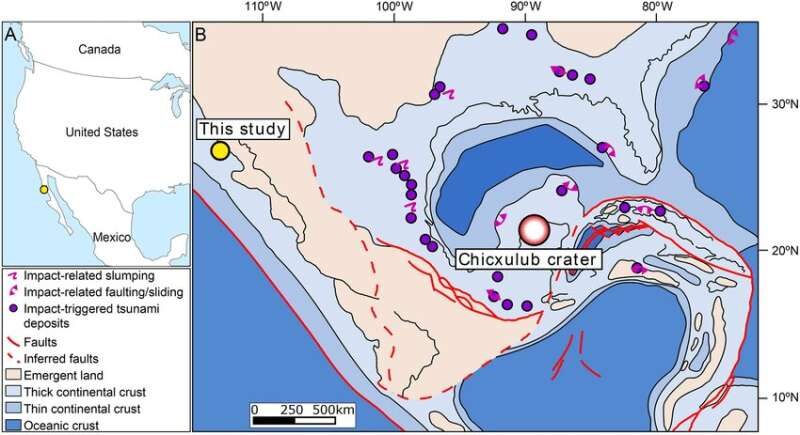
The six-mile-wide meteorite struck the Yucatan peninsula in what is now Mexico at the end of the Cretaceous Period 66 million years ago, triggering a mass extinction that killed off more than 75 percent of living species.
Uncertainty and debate have surrounded the circumstances behind the devastating wildfires known to have been caused by the strike, with several theories as to how and when they started, and their full extent.
By analysing rocks dating to the time of the strike, a team of geoscientists from the UK, Mexico and Brazil has recently discovered that some of the fires broke out within minutes, at most, of the impact, in areas stretching up to 2500km or more from the impact crater.
Wildfires that broke out in coastal areas were short-lived, as the backwash from the mega-tsunami caused by the impact swept charred trees offshore.
By studying the fossilised tree bark, geoscientists discovered that fires had already begun by the time the trees were washed away soon after the initial impact. They concluded that this was either due to a fireball of epic magnitude, or by the heat from droplets of melted rock falling back through the atmosphere in the immediate aftermath of impact.
Professor Ben Kneller from the University of Aberdeen's School of Geosciences is among the co-authors of this international study, which included scientists from the Autonomous University of Mexico, Federal University of Rio Grande do Sul, University of Leeds and University of Manchester. The study was supported by Shell Brazil under the Brazilian Government's Science without Borders programme, and published in the journal Scientific Reports.
Professor Kneller said: "What triggered these forest wildfires and their extent and timing have been debated for quite a while.
"Until now it has not been clear whether the fires were caused as a direct result of the impact or subsequently, as vegetation killed by the post-impact darkness caused by the debris thrown up into the atmosphere was set ablaze by things such as lightning strikes.
"By assembling this international team we were able to apply a unique combination of chemical, isotopic, palaeontological, palaeobotanical, chemical and spectroscopic techniques, along with geological mapping, firstly to confirm that the rocks we analysed date precisely from the impact.
"We then analysed fossilised bark still attached to the tree trunks to determine the extent of the burning, finding that the bark was already charred as the trees were washed away by the impact-related tsunami. This shows that the fires must have begun within minutes, at most, of impact.
"Ultimately our research confirms how and when these devastating fires were begun and paints a vivid and quite terrifying picture of what happened in the immediate aftermath of the meteorite strike."



Reader Comments
to our Newsletter